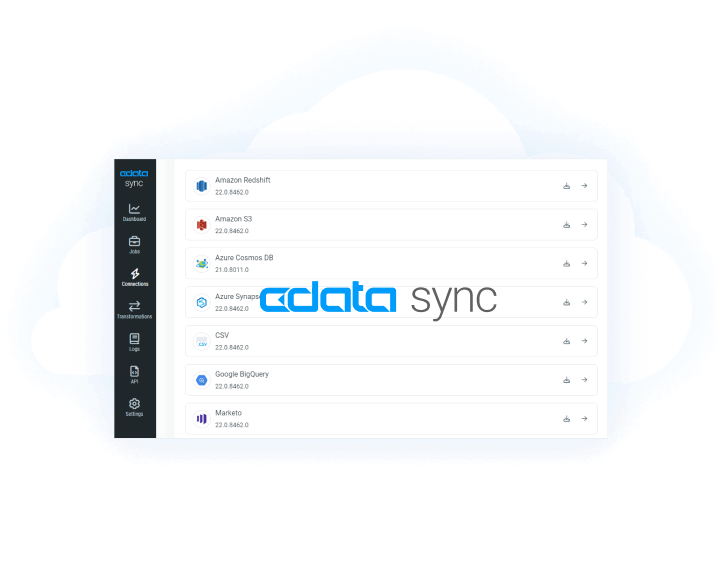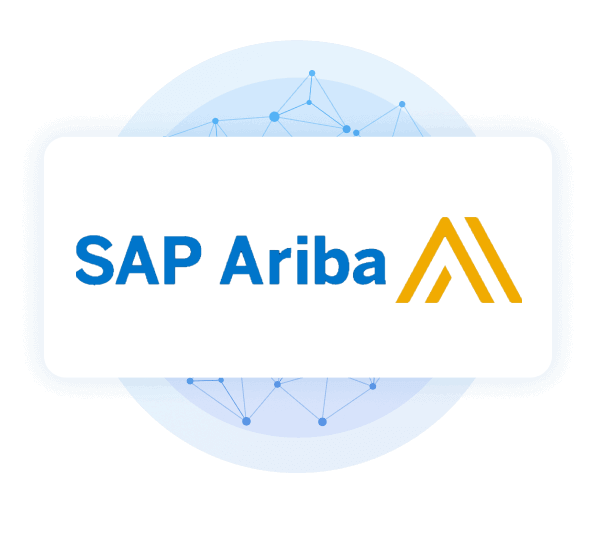Discover how a bimodal integration strategy can address the major data management challenges facing your organization today.
Get the Report →CData Software - Knowledge Base
Latest Articles
- Replicate Data from Multiple Files in an Amazon S3 Bucket Using CData Sync
- Replicate Data from Multiple Local Files Using CData Sync
- Driver Guide: Marketing Analytics Predefined Reports
- Displaying Data from Related Tables Using Angular with Connect Server
- Deploying CData Sync in a Kubernetes Environment
- Excel Add-In Getting Started Guide
Latest KB Entries
- Jetty Security Notice Overview
- Upsert Salesforce Data Using External Id in SSIS
- NuGet Repository Overview
- SAP Drivers Overview
- Embedded Web Server (.NET) - Potential Medium Security Vulnerability
- Configuring Incremental Replication in CData Sync
ODBC Drivers
- [ article ] Visualize Google Sheets Data in Tableau
- [ article ] A Comparison of the CData and Sun JDBC-ODBC ...
- [ article ] Author and Share Power BI Reports on Live Google ...
- [ article ] A Comparison of JDBC & ODBC Drivers for ...
JDBC Drivers
- [ article ] Use Crystal Reports to create reports with ...
- [ article ] Using CData JDBC Drivers from NetBeans
- [ article ] Discovering SaaS, Big Data, and NoSQL Metadata ...
- [ article ] Using the CData JDBC drivers with the Pentaho ...
SSIS Components
- [ kb ] How to Replicate Data Between MySQL and SQL Server ...
- [ kb ] SSIS Components: Source Output ColumnName Does Not ...
- [ article ] Export Data from SQL Server to Salesforce Through ...
- [ article ] Use the CData SSIS Components to Insert New or ...
ADO.NET Providers
- [ kb ] FAQ: Licensing and Deploying Builds of Finished ...
- [ article ] ADO.NET Provider Getting Started Guide
- [ article ] Hooking into Google Apps With CData Google Data ...
- [ article ] Configuring the CData Query Federation Driver
BizTalk Adapters
- [ article ] How to Generate SQL Command Schemas for the CData ...
- [ article ] How to Generate Updategrams with the CData BizTalk ...
- [ article ] Configure a Solicit-Response Send Port for the ...
- [ article ] Standards-Based Access to NoSQL Data Sources
Excel Add-Ins
- [ article ] Transfer Company File Data using the CData Excel ...
- [ article ] Bill an Invoice with the CData Excel Add-In for ...
- [ article ] Excel Add-In Getting Started Guide
- [ article ] Video: Connecting with MongoDB Data from Microsoft ...
API Server
- [ article ] API Server Cloud Tunneling Capabilities
- [ article ] Launch the CData Sync Azure VM on Microsoft Azure
- [ article ] Building Dynamic React Apps with Database Data
- [ article ] Edit and Search NetSuite External Objects in ...
Data Sync
- [ kb ] How to Replicate Data Between MySQL and SQL Server ...
- [ article ] Replicate Data from Multiple Local Files Using ...
- [ article ] Deploying CData Sync in a Kubernetes Environment
- [ article ] Replicate Data from Multiple Files in an Amazon S3 ...
Windows PowerShell
- [ article ] PowerShell Cmdlets Getting Started Guide
- [ article ] Query Google Calendars, Contacts, and Documents ...
- [ article ] Reconciling Authorize.net Transactions with ...
- [ article ] Import QuickBooks Online Data to QuickBooks ...






